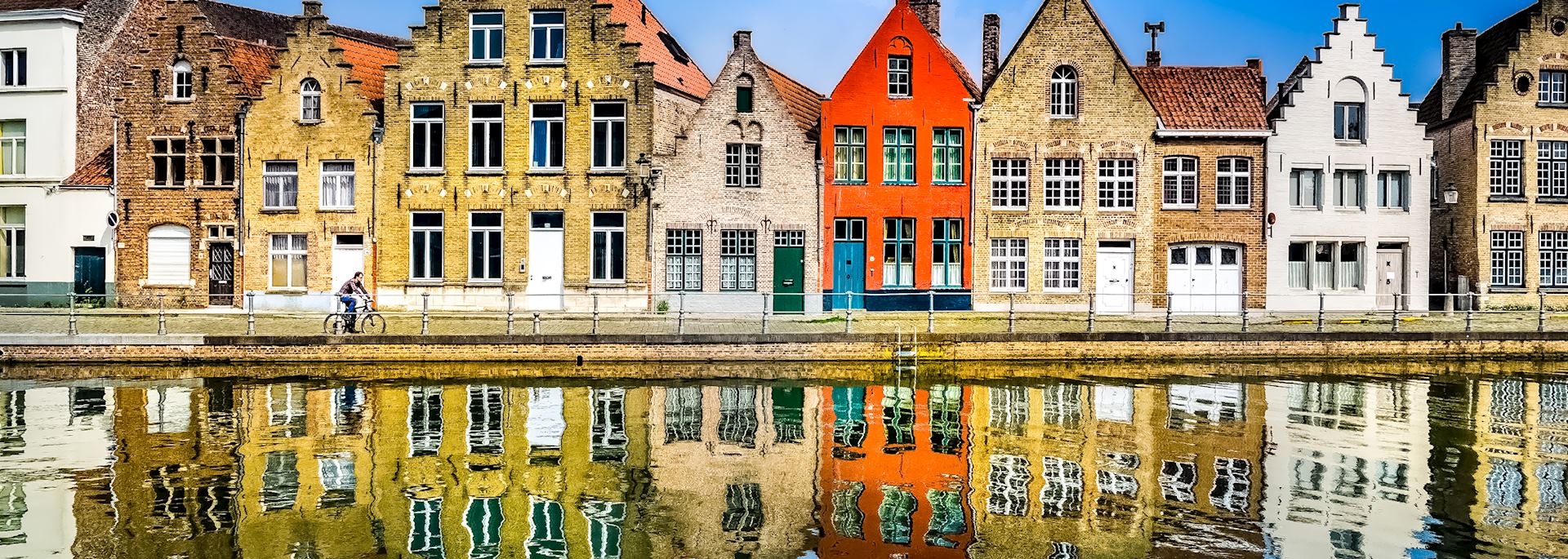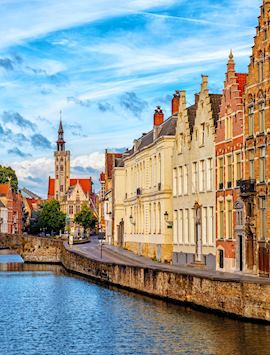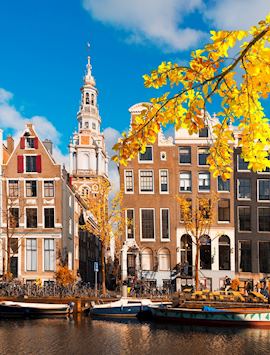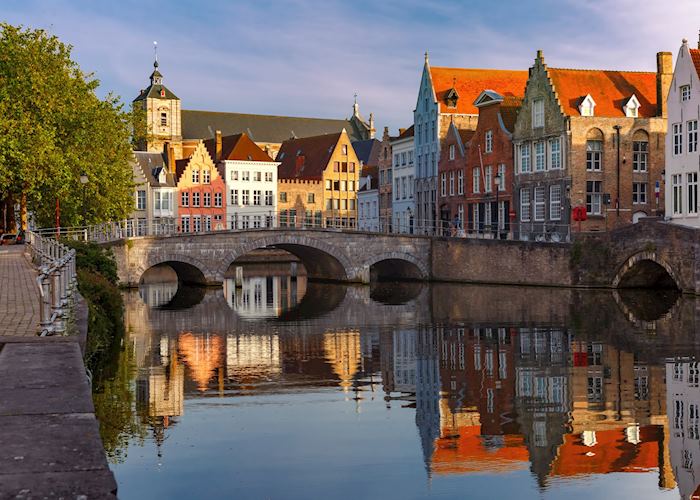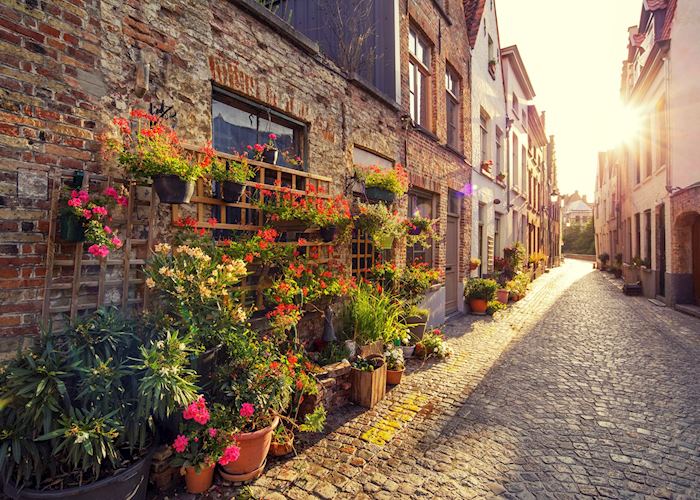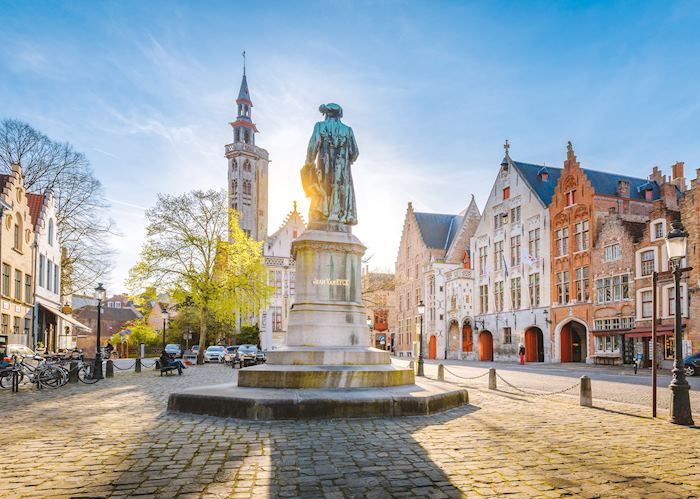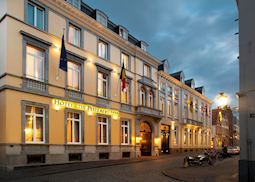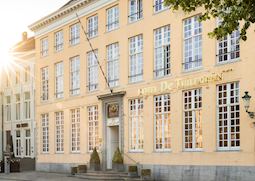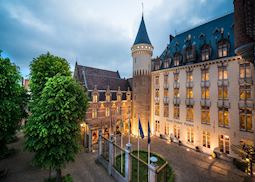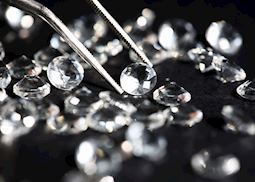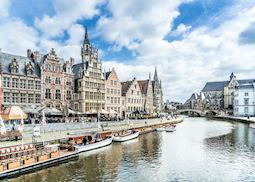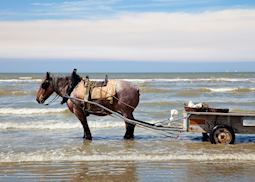Jump to:
Brightly painted houses, medieval architecture, citywide canals and a well-established beer culture — all in Bruges, Belgium’s most photogenic city
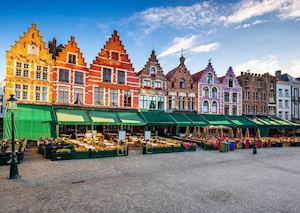
Bruges is one of the best-preserved medieval towns in Europe, with near-countless step-gabled houses in a riot of shades lining its photogenic canals. Originally the site of a 9th-century fortress, it became an important trading port and reached a golden age of peace and prosperity in the 14th century.
While the 16th century saw a reversal of fortune for Bruges, the historic section of town was rediscovered as a tourist destination in the modern era. It’s also known for its wide range of museums, which cover a variety of cultural and historical interests and regional art.
We can arrange walking tours, afternoons on the canal and hikes and bicycle rides in nearby Zwin Nature Park. Bruges is a good base for exploring, as it’s close to the North Sea, Brussels and other destinations we can fit to your interests. From here, you can also visit World War I sites like Veurne, Flanders Field and Ypres, or see the beaches at De Panne and Middelkerke.
Things to see and do in Bruges
Markt Square and belfry
The main market area of Bruges since 958, today the lively town square holds concerts, art exhibits and festivals in addition to a food and crafts market every Wednesday.
The square’s central fountain is surrounded by medieval-era buildings and museums, step-gabled and brightly painted, dominated by the colossal 13th-century belfry. Thrusting 83 m (272 ft) above the town, its octagonal turret can be reached via 366 steep steps, giving you an excellent view of the entire city. The old guild houses arrayed around the plaza have largely been converted to cafés and restaurants.
The Burg and Stadhuis
Down the street from the Markt is another main square, the Burg — the oldest part of the city, given its name by the fortress that was built here in the 9th century. While the fortress is long gone, the square remained a seat of government for the region of Flanders, and now contains the Stadhuis or City Hall, a white-stone Gothic structure, built in the 14th century. Its heavily-ornamented, narrow arched windows, angel-tipped gables and stately spires all bespeak the wealth of Bruges’ golden age.
Also in the Burg are an 18th-century neoclassical courthouse and the 12th-century Basilica of the Holy Blood, where a relic of Jesus Christ is said to be held.
The Rozenhoedkaai, or Quay of the Rosary
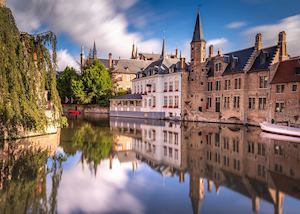
At the point where the Groenerei and Dijver canals meet, a series of cobbled walking trails, gabled houses and well-placed greenery also come together to create one of the most photogenic spots in Bruges. Lined with the waterfront terraces of local restaurants, the spot attracts strolling visitors as well as locals seeking to enjoy the lazy water and excellent views. We can arrange a boat tour of the canals, which offers a different perspective on the well-preserved beauty and history of the city.
Minnewater Park and the Begijnhof
The old merchant port of Bruges is now Minnewater Park, one of the most relaxing spots in the city with its walking trails, bridges, benches and gardens surrounding the waters of the so-called Lake of Love. The lake — actually a reservoir and part of the canal system — is attached to a legend of a lovelorn girl who died because of forbidden love, and the bridge over the water is a popular spot for lovers.
An old stone powder tower remains on the southern end of the lake, while the 13th-century begijnhof borders the northern side. Here, widows gave up their worldly possessions for a life of piety. The begijnhof is currently inhabited by an order of Benedictine nuns, and you can visit to learn about the long history of these cloisters.
Breweries
While Belgium is generally well-known for its beer, the region of Flanders is one of its main hubs, and offers brew styles all its own. The two breweries most worth visiting are De Halve Maan and Bourgogne des Flandres, which both offer tastings and guided tours of their facilities.
If you want to explore more broadly, a large selection of small local bars feature dozens of other regional and national options. And, if you’re really interested in the process of making beer, there’s The Bruges Beer Experience, a museum and tasting room where you can interact directly with the ingredients that go into your foamy beverage. Their bar also offers great views over the Markt Square.
Museums
There are dozens of museums in Bruges, with many focusing on the city’s rich art history. We can recommend a few to help you narrow it down. Groeninge Museum, in the former Eekhout Abbey, includes works from Belgium’s most renowned artists, including Jan van Eyck. Historium is a state-of-the-art facility using film and special effects to recreate life in the 15th century.
The Church of our Lady, while still a working church, also showcases a number of art pieces including the marble Madonna and Child by Michelangelo. And, focusing on three of Belgium's specialties, the Friet Museum, Choco-Story and Bruges Beer Experience are all within a five-minute walk of Markt Square.
Best time to visit Bruges
The months of March through May and September through November are the best times to visit, as temperatures are comfortable, trees and gardens are in full bloom and cultural events are in full swing. These are the busier months for domestic travel, however, so the city does tend to be busy.
June through August has fewer visitors due to increased temperatures and Europeans heading to beaches. December is very lively as the Christmas Market kicks off the holiday season, attracting people from all over the world. January and February have minimal crowds, but many museums and attractions are closed for renovations.
who's been there
Start planning your tailor-made trip to Bruges by contacting one of our Belgium specialists
-
617-223-4521617-223-4356
- Make an inquiry
Suggested itineraries featuring Bruges
Our itineraries will give you suggestions for what is possible when you travel in Bruges, and they showcase routes we know work particularly well. Treat them as inspiration, because your trip will be created uniquely by one of our specialists.
Photos of Bruges
Accommodation choices for Bruges
We've selected a range of accommodation options for when you visit Bruges. Our choices usually come recommended for their character, facilities and service or location. Our specialists always aim to suggest properties that match your preferences.
-
![Hotel The Peellaert, Bruges]()
Hotel The Peellaert
Bruges -
![Hotel De Tuilerieën, Bruges]()
Hotel De Tuilerieën
Bruges -
![Hotel Dukes' Palace, Bruges]()
Hotel Dukes' Palace
Bruges -
![The Pand Hotel, Bruges]()
The Pand Hotel
Bruges
Ideas for experiencing Bruges
Our specialists seek out authentic ways to get to know the places that could feature in your trip. These activities reflect some of the experiences they've most enjoyed while visiting Bruges, and which use the best local guides.
-
World War I tour ![Tyne Cot Cemetery, Zonnebeke, Belgium]()
World War I tour
World War I tour
See the fields where soldiers fought on the front lines during World War I on this full-day trip around Flanders with a private guide and driver. You’ll see a preserved trench, burial grounds, museums and memorials.
View details -
Diamond District tour & diamond cutting workshop ![Loose diamonds, Antwerp]()
Diamond District tour & diamond cutting workshop
Diamond District tour & diamond cutting workshop
Explore Antwerp’s legendary Diamond Quarter, a stopover for 86% of the world’s legal raw diamonds, on this three-hour walking tour. Your guide will take you to a workshop where you can watch the gemstones be cut, shaped and polished.
View details -
Private canal cruise with champagne & charcuterie ![Banks of the Leie River, Ghent]()
Private canal cruise with champagne & charcuterie
Private canal cruise with champagne & charcuterie
See a world-renowned altarpiece, a bird’s-eye view of the city, a medieval castle and lively market squares on a walking tour of Ghent. Then explore the city’s waterways on a boat tour of the canals, where you’ll be served local delicacies and Belgian beer.
View details -
Bruges old town tour & canal cruise ![Canal cruise in Bruges, Belgium]()
Bruges old town tour & canal cruise
Bruges old town tour & canal cruise
Spend a few hours with a guide exploring Bruges’ historical highlights, where you’ll see artwork by Michelangelo, Gothic cathedrals and a towering belfry. Then, spend an hour cruising the postcard-worthy canals and see step-gabled houses and stone bridges.
View details -
Coastal bicycle ride, Zwin Nature Park and Damme ![Windmill outside of Damme, Belgium]()
Coastal bicycle ride, Zwin Nature Park and Damme
Coastal bicycle ride, Zwin Nature Park and Damme
Explore the windswept beaches, flat green meadows and reed-lined streams and canals along Belgium’s coast. Your local guide will lead you along a series of paved bike paths through the countryside, seaside resort towns and small, authentic villages.
View details -
Shrimp farming by horseback in Oostduinkerke ![Traditional shrimp farming in Belgium]()
Shrimp farming by horseback in Oostduinkerke
Shrimp farming by horseback in Oostduinkerke
See one of Belgium’s most singular cultural traditions. At Oostduinkerke, you can watch fishermen farm shrimp atop sturdy Brabant draft horses. You’ll then get to try the shrimp during a beachfront cookout.
View details
